|
Getting your Trinity Audio player ready... |
Tabla de Contenido/ Table of Contents
- 1 Controversy Over School Cameras in Miami-Dade: Safety, Benefits, and Costs to Taxpayers
- 1.1 Speed Cameras in School Zones: A Heated Political Debate
- 1.2 Eileen Higgins’ Intervention in December 2024
- 1.3 Operational Details of the Cameras
- 1.4 Implementation of RedSpeed Detection Cameras in Miami-Dade School Zones: Locations and Timeline
- 1.5 Concerns About Signage and Fairness
- 1.6 Proposals to Improve the Program
- 1.7 FAQ: Frequently Asked Questions
- 1.8 Conclusion
Controversy Over School Cameras in Miami-Dade: Safety, Benefits, and Costs to Taxpayers
In Miami-Dade, the implementation of cameras on school buses and in school zones has sparked intense debates. Supported by Mayor Daniella Levine Cava and sponsored by commissioners like Anthony Rodríguez, these measures aim to enhance student safety. However, controversies have arisen regarding their effectiveness, contract management, financial impact, and equity in resource distribution.
Speed Cameras in School Zones: A Heated Political Debate
Approval in January 2024
The program was approved on January 17, 2024, with a 10-3 vote by the County Commission. Anthony Rodríguez, the project’s sponsor, defended the measure as an essential tool to protect children in school zones. In statements to Telemundo 51, Rodríguez explained:
“When a driver is speeding through a school zone, the camera will record the violation and share the information with the police before validating the fine and mailing it to the vehicle owner’s address.”
On the other hand, Commissioner René García vehemently opposed the contract’s approval, highlighting issues with the process of selecting the service provider. According to García, the $240 million contract awarded to RedSpeed Georgia did not go through a formal bidding process in the county. Instead, it used a method called piggybacking, which relies on the bidding process of another jurisdiction. García questioned:
“How can we award a $240 million contract to a company without going through a bidding process? Doesn’t this call the county’s transparency into question?”
Points of Controversy
- Program Effectiveness:
Rodríguez defended the choice of RedSpeed, stating:
“All market providers submitted their bids. The company that won this contract in Georgia is the same one awarded the contract here in Miami-Dade.”
García, however, questioned whether the cameras effectively reduce speeding violations, arguing that there is no solid data proving their impact on road safety. - Contract Transparency:
García criticized the use of the piggybacking method to avoid a local bidding process, suggesting it undermines public trust. - Resource Distribution:
The $100 fine for each violation is divided as follows:- $40 to the school district.
- $41 to the county.
- $19 to RedSpeed.
Rodríguez emphasized that the system would be fully funded by the service provider, including installation and maintenance.
Eileen Higgins’ Intervention in December 2024
During the County Commission meeting in December 2024, Commissioner Eileen Higgins reignited the debate by highlighting additional issues with the school zone camera program. Drawing on data analysis, Higgins questioned the system’s effectiveness and raised concerns about its impact on vulnerable communities.
Higgins’ Key Criticisms
- Repeat Violations:
According to Higgins, the cameras are not deterring drivers. Many offenders repeat violations in the same locations, suggesting the program is more focused on generating revenue than changing behavior. - Disproportionate Impact:
The concentration of cameras in predominantly low-income areas with higher African-American populations has raised equity concerns. Higgins stated:
“The program seems to perpetuate existing inequalities, disproportionately affecting vulnerable communities.” - Transparency and Governance:
Like García, Higgins criticized the lack of transparency in selecting the service provider and demanded a clearer assessment of the program’s real benefits.
Original Video
https://miamidade.granicus.com/player/clip/8352?meta_id=442182
Operational Details of the Cameras
On School Buses
- Cameras Installed: 950 buses equipped by BusPatrol.
- Fines: $225 for ignoring a school bus’s “STOP” signal.
- Impact: In the first two weeks of operation, 11,500 fines were issued, generating an estimated $2.6 million in revenue.
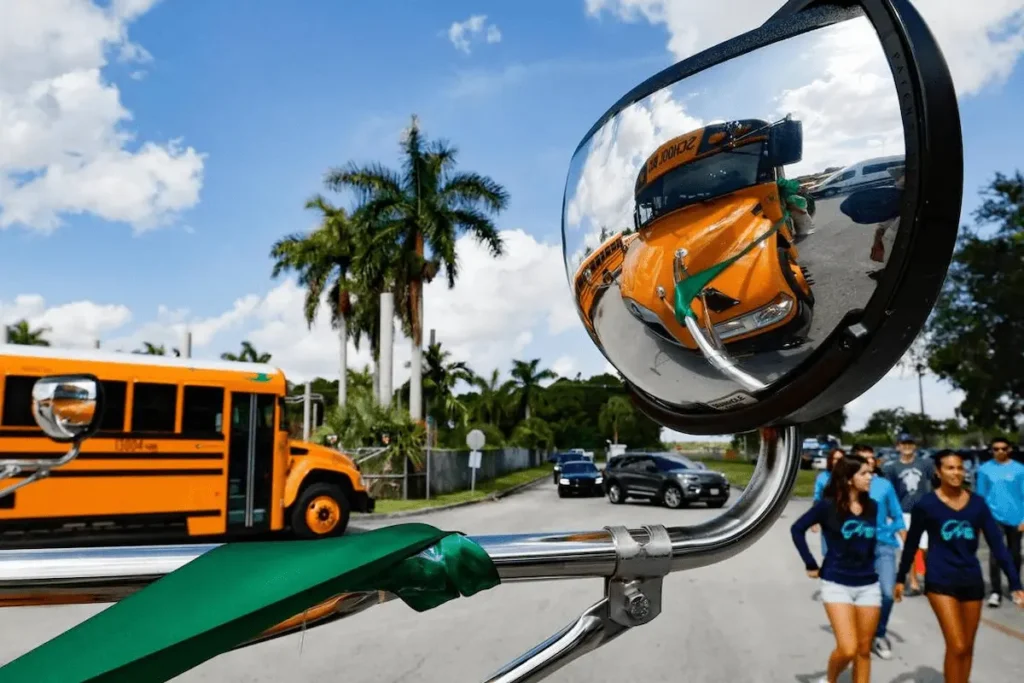
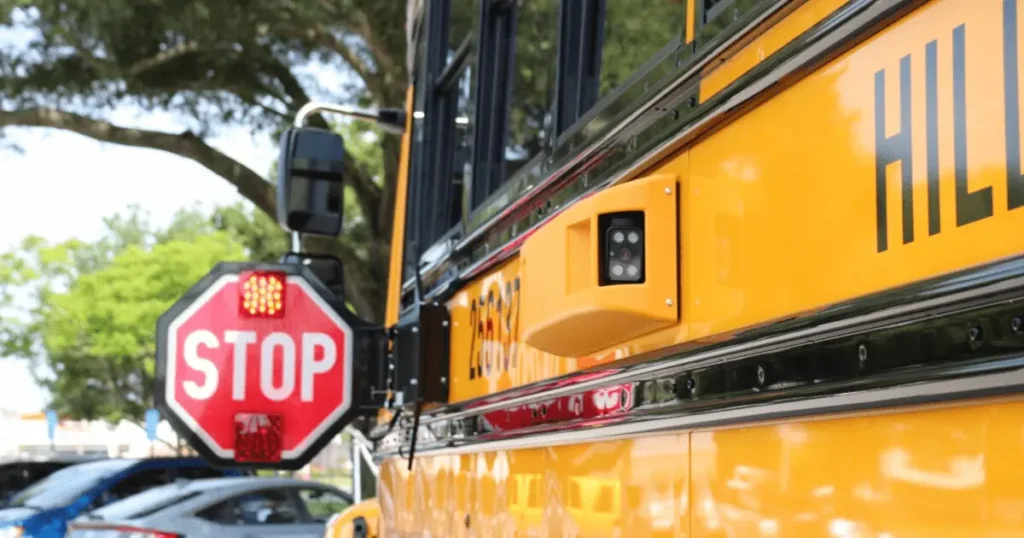

In School Zones
- Cameras Installed: 206 by August 2024, with plans for expansion.
- Fines: $100 per violation, without points on the driver’s license. The camera activates at 11 mph above the speed limit.
- Hours of Operation: Monday to Friday, 30 minutes before and after school hours.
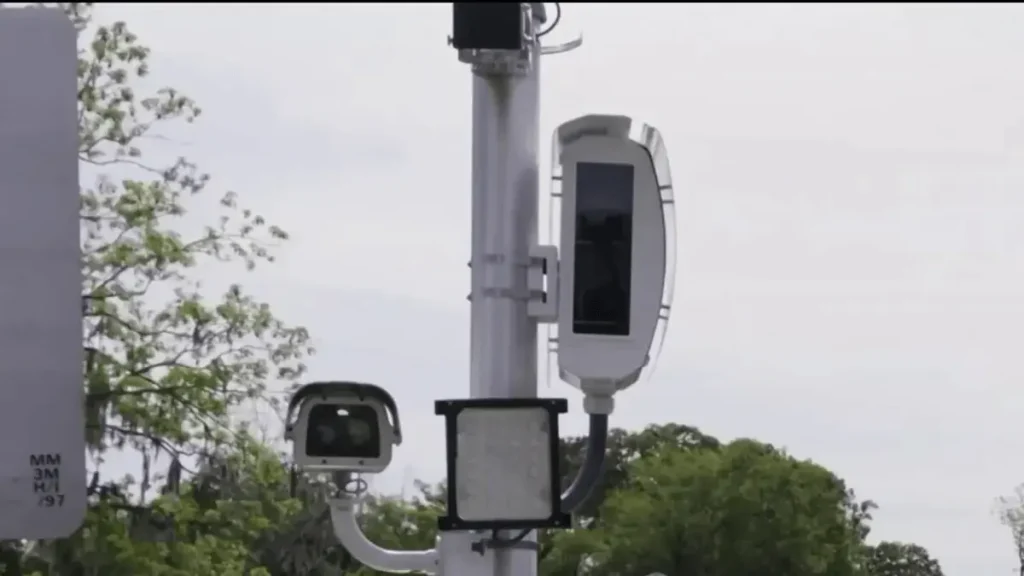
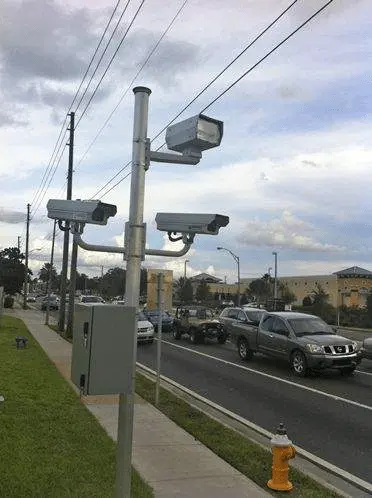
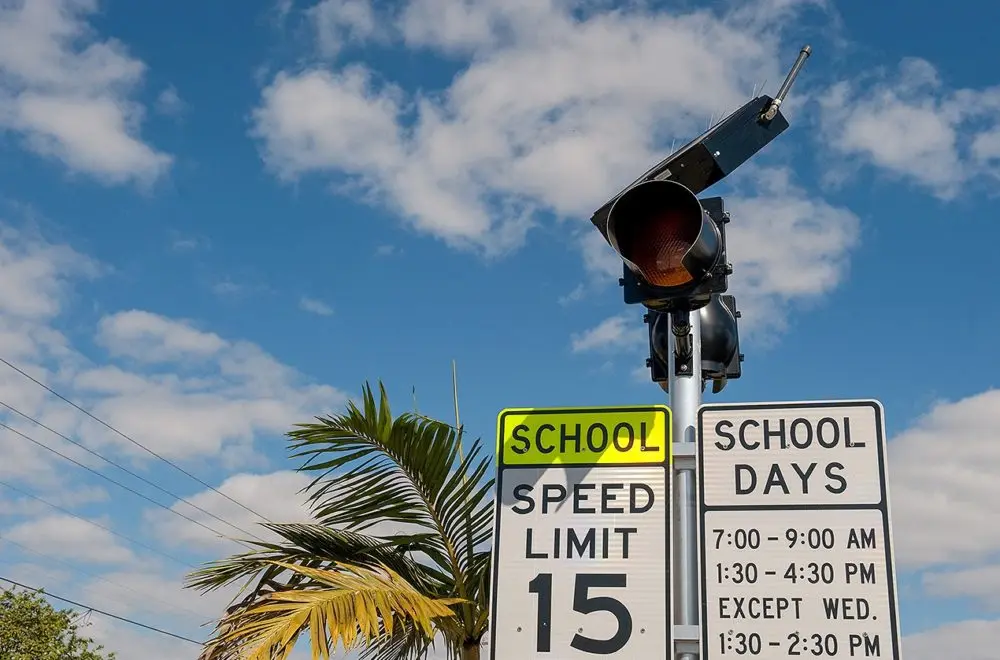
Implementation of RedSpeed Detection Cameras in Miami-Dade School Zones: Locations and Timeline
During the 2024/2025 academic year, Miami-Dade County is installing RedSpeed detection cameras in 206 school zones across unincorporated areas to enhance student safety. The initial set of cameras was activated on Monday, November 4, 2024.
The first installations are at the following schools:
- Goulds Elementary School: 23555 SW 112th Avenue, Miami, FL 33032
- Hammocks Middle School: 9889 Hammocks Boulevard, Miami, FL 33196
- Madie Ives K-8 Center: 20770 NE 14th Avenue, Miami, FL 33179
- Redland Middle School: 16001 SW 248 Street, Miami, FL 33031
- Devon Aire K-8 Center: 10501 SW 122 Avenue, Miami, FL 33186
- Highland Oaks Middle School: 2375 NE 203rd Street, Miami, FL 33180
- E.W.F. Stirrup Elementary School: 330 NW 97th Avenue, Miami, FL 33172
- Ruben Dario Middle School: 350 NW 97th Avenue, Miami, FL 33172
- American Senior High School: 18350 NW 67 Avenue, Miami, FL 33015
- Charles R. Drew K-8 Center: 1775 NW 60th Street, Miami, FL 33142
- Robert Russa Moton Elementary School: 18050 Homestead Avenue, Miami, FL 33157
This initiative supports the County’s Vision Zero strategy, aiming to eliminate traffic fatalities and severe injuries by 2040. For the first 30 days post-installation, drivers exceeding the speed limit by 10 mph or more in these school zones will receive warnings. After this period, violators will be issued $100 citations.
For more information and updates, please visit the Miami-Dade County Department of Transportation and Public Works.
Concerns About Signage and Fairness
A critical aspect of the program is ensuring proper signage in school zones. Drivers unfamiliar with the area or school hours may unintentionally violate the rules.
Logical Questions
- Is it fair to penalize drivers entering from side streets without visible signage?
- What guarantees are there that signs are operational and visible at all times?
- Is the distribution of cameras equitable across income levels and communities?
- What processes are in place to appeal fines if signage is inadequate?
- How are errors in identifying violators prevented by the cameras?
Proposals to Improve the Program
- Review Camera Distribution: Ensure cameras are equitably distributed across all communities.
- Uniform Signage: Install visible and functional signs at all access points to school zones.
- Independent Audits: Evaluate the effectiveness of the cameras and the program’s financial impact.
- Driver Education: Launch campaigns to inform drivers about school zone regulations.
FAQ: Frequently Asked Questions
- How can I tell if I’m in a school zone with cameras?
School zones should have visible signs and flashing lights during school hours. - What happens if I don’t know the school hours and exceed the speed limit?
While fines only apply during school hours, drivers may appeal if the signage was unclear. - Is it legal to fine drivers entering from streets without signage?
Drivers can legally challenge fines if adequate signage was not present. - Why was an out-of-state company chosen for this program?
Anthony Rodríguez stated that RedSpeed was selected for its expertise and experience in similar programs, though the process has faced criticism. - Can I appeal a fine if I believe the signage was inadequate?
Yes, drivers can provide evidence to contest fines in such cases.
Conclusion
The school bus and school zone cameras in Miami-Dade have sparked intense political and social debates. While Anthony Rodríguez defends the program as vital for student safety, René García and Eileen Higgins have raised concerns about transparency, effectiveness, and equity. This ongoing discussion underscores the need for better management and design of these programs to fulfill their intended purpose of saving lives without perpetuating disparities.
School zone safety is not up for debate; what raises concerns are the administrative, social, and technical aspects surrounding the project’s implementation. Addressing these issues will not only ensure the effectiveness of the measures but also foster community trust in a system designed to protect its most vulnerable members.
The priority must remain student safety, but with transparent, equitable, and data-driven management that demonstrates the program’s positive impact on overall well-being.
Want more post like this?
Head over to our homepage for the latest updates from South Florida and beyond:












Aass usually Levine, a Democrat, of course, came with a social program to F… Miami-Dade residents. An “expert” in Virginia gives you a Notice Of Violation THAT YOU CAN NOT CONTEST, so simply, so as the typical democratic style, you have to:
First Find out where you have to fill the contest (it happen to be is in Newington, Virginia) and they have only ONE PURPOSE, making you pay. This is another fraud by Democrats.
https://newsmiamidade.com/es/__trashed-5/
Aquí puedes tener más elementos sobre las cámaras y las zonas escolares.
Y las posibles multas que hoy son tendencia en las redes y en las dicusiones de padres y conductores de todo el condado Miami-Dade
https://newsmiamidade.com/child-safety-vs-revenue-vs-parental-stress/
Here you can find more information about cameras and school zones.
And the possible fines that are trending today on social media and in discussions among parents and drivers throughout Miami-Dade County